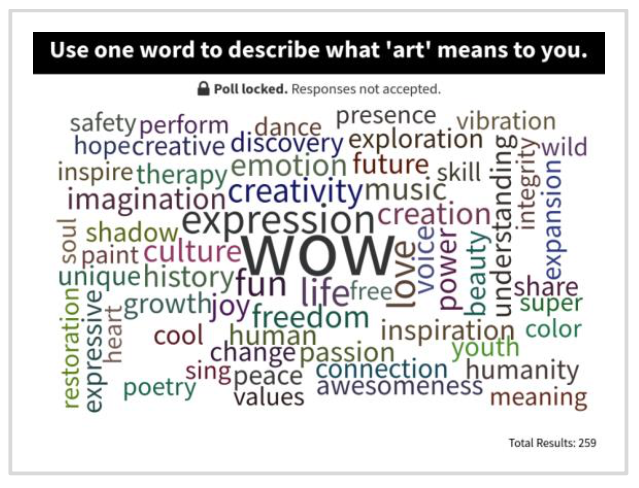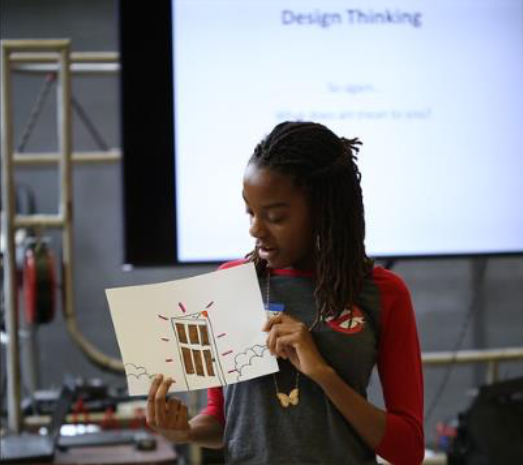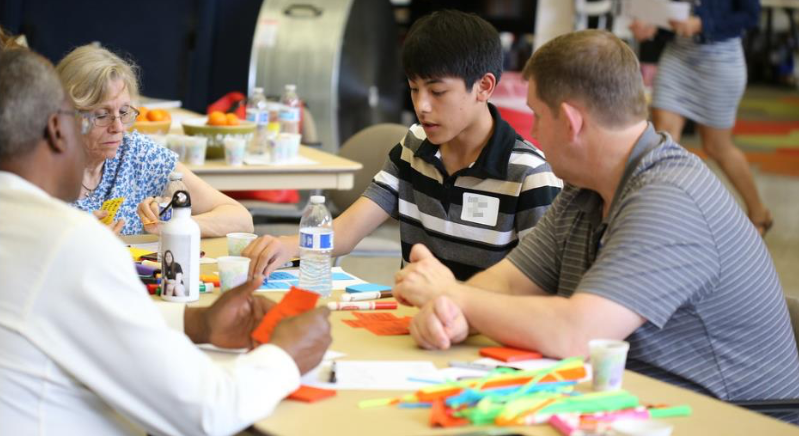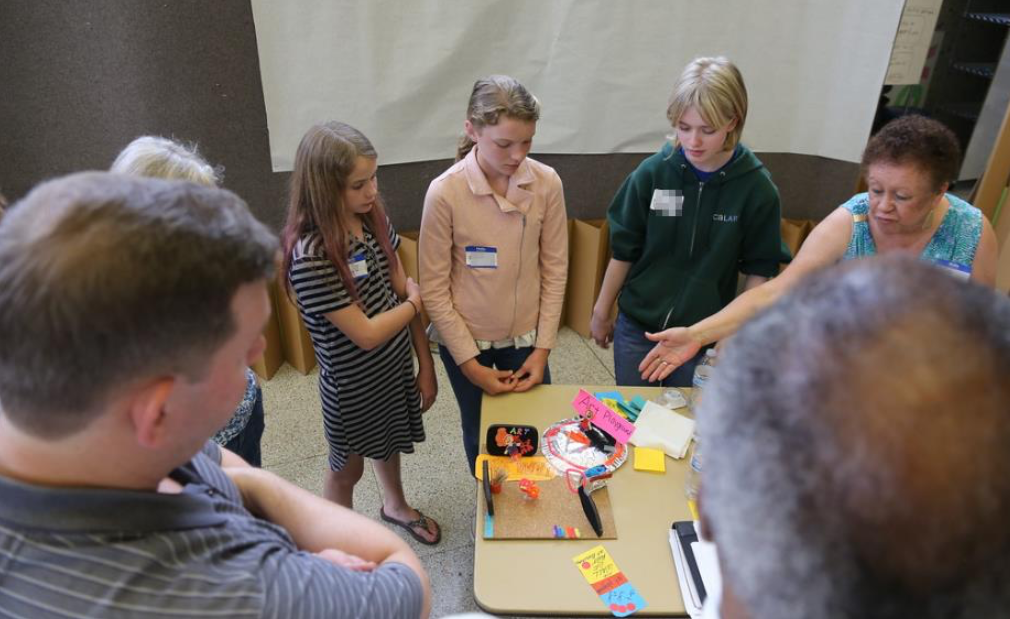Design Thinking Sessions
As a part of our assessment journey we heard some powerful stories about the value of arts education as well as the gaps and needs observed in this space. The goal of our assessment and discovery was to tell a story and highlight useful recommendations and solutions that fit and address the needs of our stakeholders. That made us wonder, what if we put the arts education stakeholders at the center of the process. What would happen if we brought these stakeholders together and asked them to not only highlight the gaps but also identify opportunities and help us build solutions?
With that in mind, we organized a Design Thinking workshop where we brought together leaders, stakeholders, non-profits and recipients of arts education and asked them to imagine a future that includes a deeper commitment to arts in schools in the Sacramento region and build solutions that will take us there. We challenging them with solving the following problem: “How might we bring art to every child?”
Throughout the 4-hour process, the four teams made many discoveries, as outlined below:
Ideation: “What Art Means to Me”
During the first part of the session we asked attendees to participate in a Poll everywhere interactive survey exercise where they were tasked to enter a word, or multiple words that describe what art means to them; participants used their mobile phones to make the submissions. Based on the words that were submitted, the below word cloud was automatically produced. The words that appear bigger in size are the words that were submitted more frequently.

Following the word cloud exercise, we asked participants to create a drawing that captured what art means to them in a visual form. We asked the participants to share with describe their drawings to the group; we then displayed them on the wall for the remainder of the session.

Prototyping solutions: “How Might We Bring Art To Every Child”
During the second part of the workshop we asked the participants to work in their table groups to brainstorm creative ideas that address solutions to how we could bring art to every child. Team members shared their ideas with one another, mixing and remixing, and building on one another’s creative solutions to create a recommendation.

After narrowing down to their preferred recommendation, each team built a real, tactile prototype of their proposed solution. Each team then pitched their solution to another team and asked for feedback. Based on the feedback they received teams were able to make adjustments to their solutions one last time before the final presentations.

At the end of the Design Thinking workshop each group pitched their solution to the entire group. The following is a short description of the four solutions that the teams envisioned and built prototypes around:
-
Art week: A concept for “An Art week” in each district where all students showcase an art they learned.
-
Art App: A concept for an app that serves as inventory of tools and resources and facilitates matchmaking and discussion between Art Seekers and Art Providers.
-
Art Playground: A concept for a space where students can do art (all genres). This space gives all students an opportunity to interact with art and be creative. The group also discussed management of such space.
-
Art Integration: A concept to have a way where all students are exposed to all/variety of genres of art. Arts instructors could be leveraged to achieve this by rotating classes/schools. The team emphasized the importance of every child being included regardless of their artistic ability or achievement levels.
